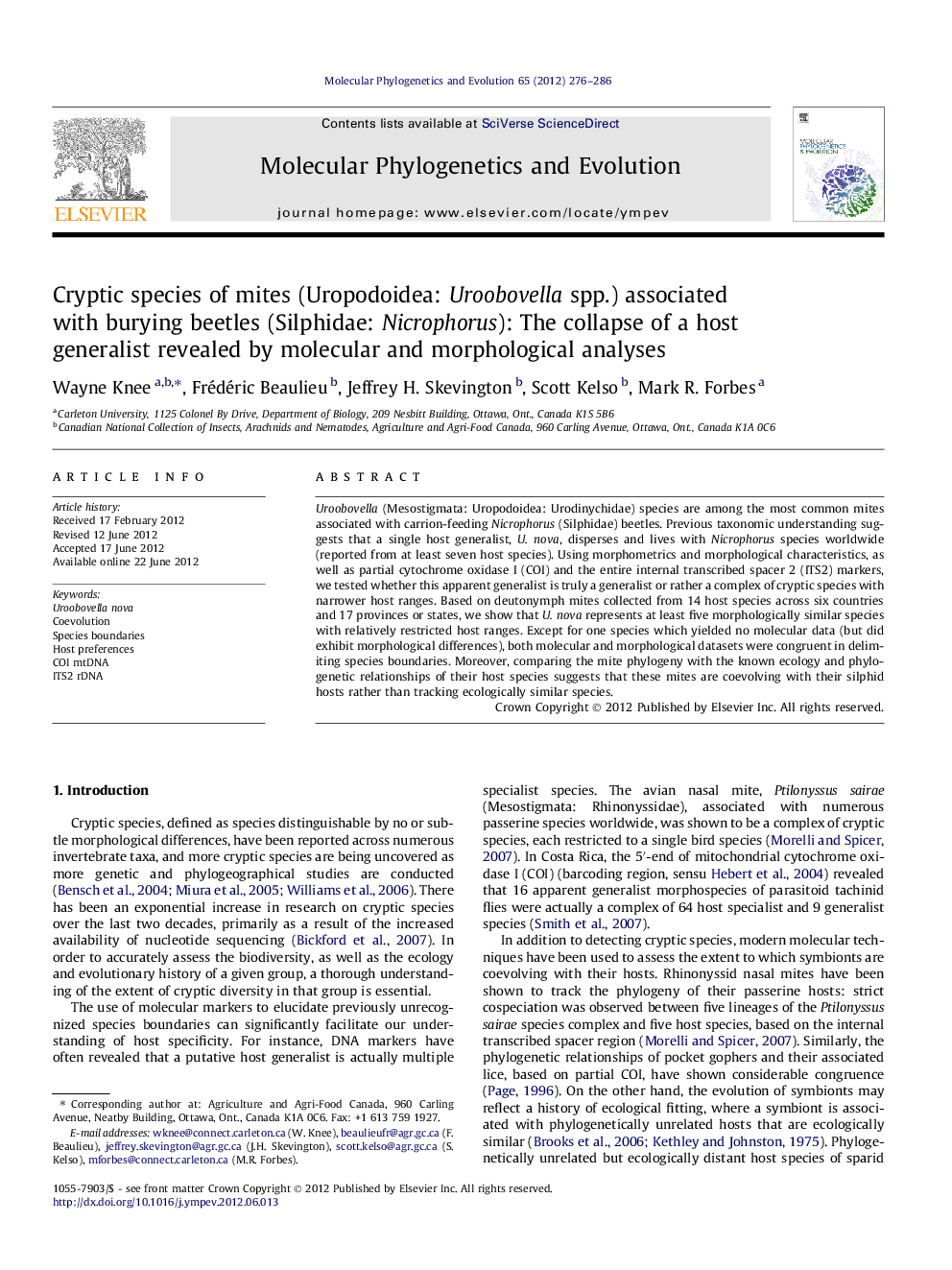| کد مقاله | کد نشریه | سال انتشار | مقاله انگلیسی | نسخه تمام متن |
|---|---|---|---|---|
| 5920256 | 1164285 | 2012 | 11 صفحه PDF | دانلود رایگان |

Uroobovella (Mesostigmata: Uropodoidea: Urodinychidae) species are among the most common mites associated with carrion-feeding Nicrophorus (Silphidae) beetles. Previous taxonomic understanding suggests that a single host generalist, U. nova, disperses and lives with Nicrophorus species worldwide (reported from at least seven host species). Using morphometrics and morphological characteristics, as well as partial cytochrome oxidase I (COI) and the entire internal transcribed spacer 2 (ITS2) markers, we tested whether this apparent generalist is truly a generalist or rather a complex of cryptic species with narrower host ranges. Based on deutonymph mites collected from 14 host species across six countries and 17 provinces or states, we show that U. nova represents at least five morphologically similar species with relatively restricted host ranges. Except for one species which yielded no molecular data (but did exhibit morphological differences), both molecular and morphological datasets were congruent in delimiting species boundaries. Moreover, comparing the mite phylogeny with the known ecology and phylogenetic relationships of their host species suggests that these mites are coevolving with their silphid hosts rather than tracking ecologically similar species.
Highlights⺠Collected uropodoids from 14 host species (Silphidae) across six countries. ⺠Morphological and molecular analyses used to examine uropodoid species boundaries. ⺠Morphology and DNA suggest that single generalist is a complex of cryptic species. ⺠Associated uropodoids may be coevolving with their silphid hosts.
Journal: Molecular Phylogenetics and Evolution - Volume 65, Issue 1, October 2012, Pages 276-286